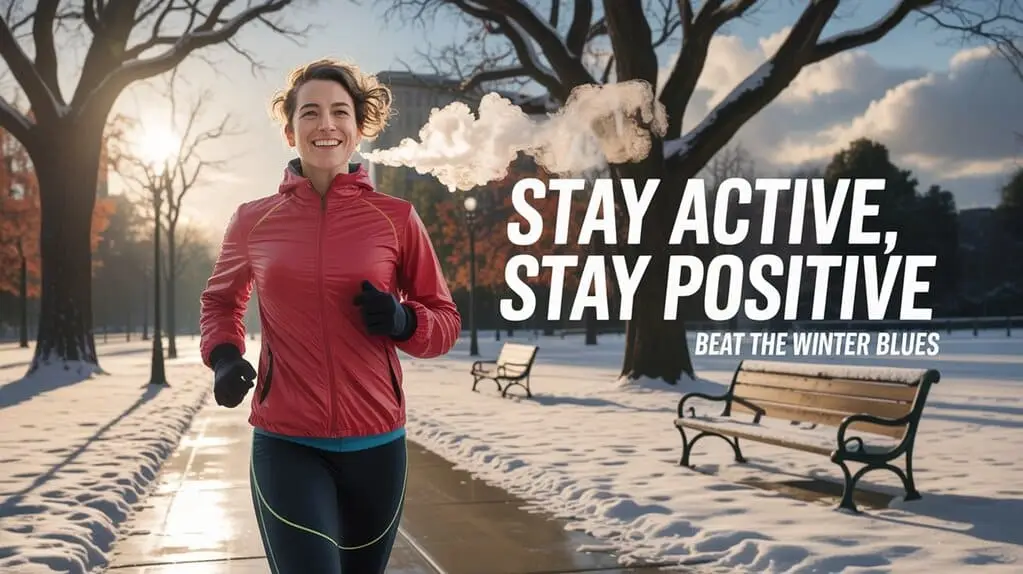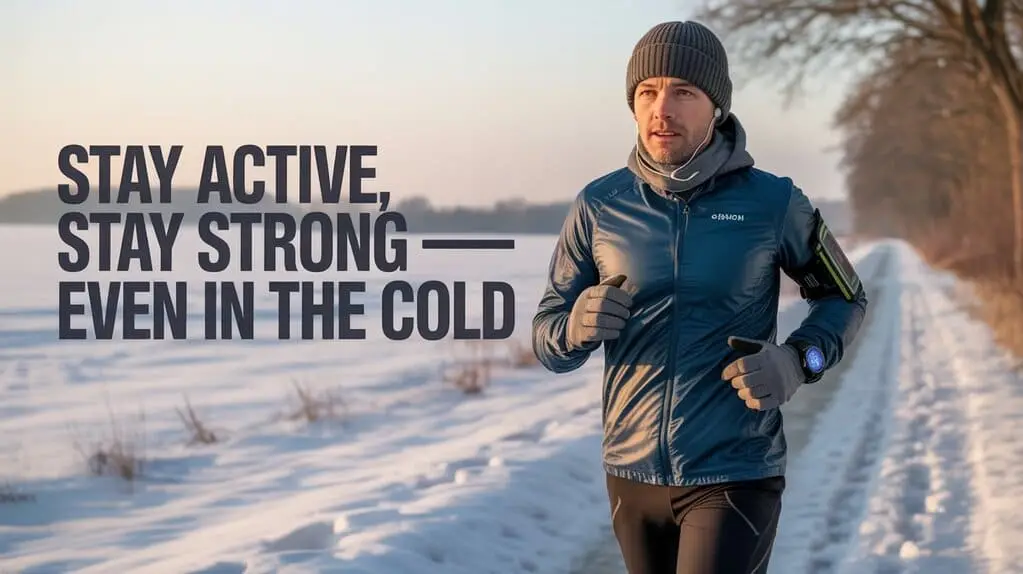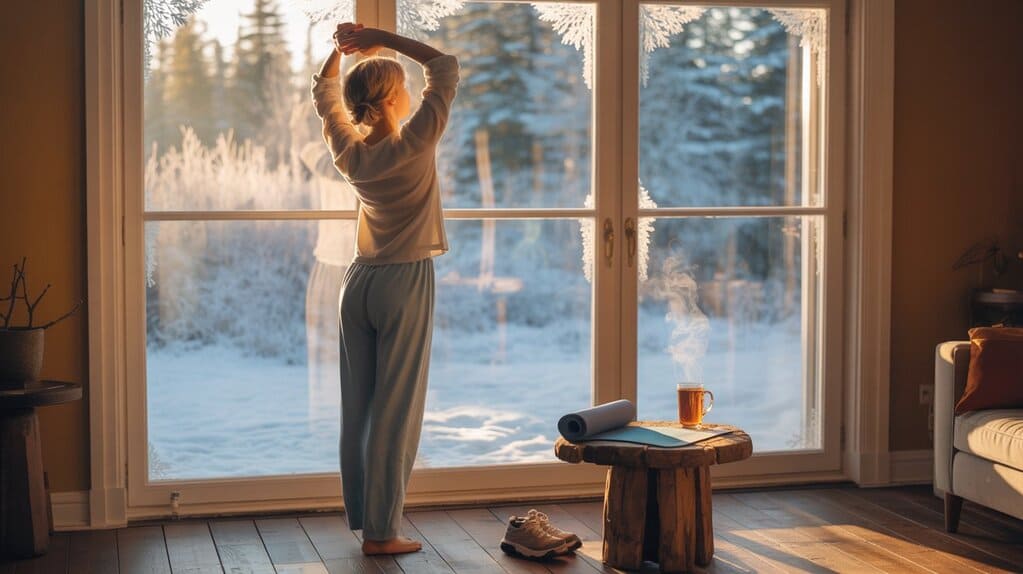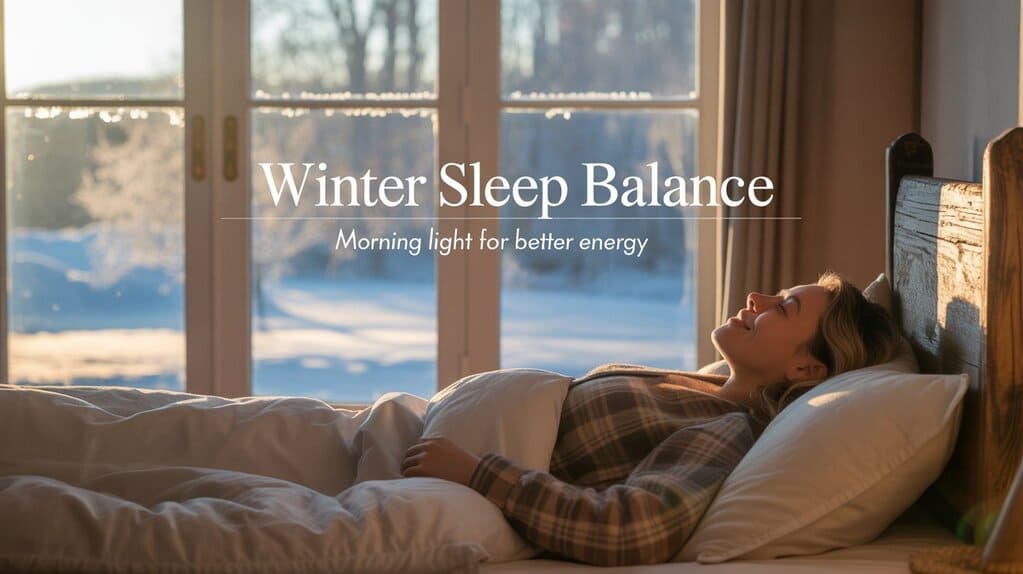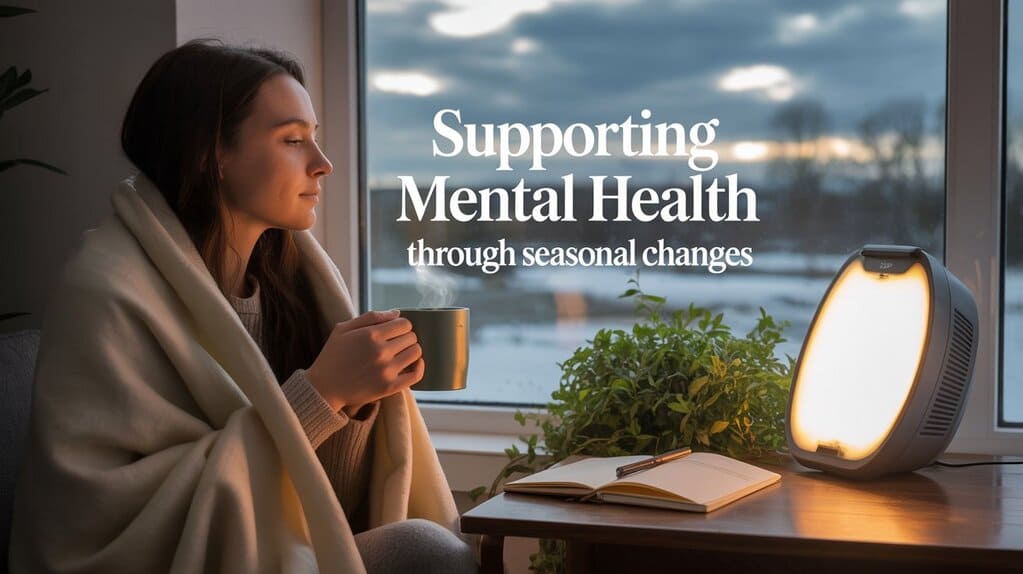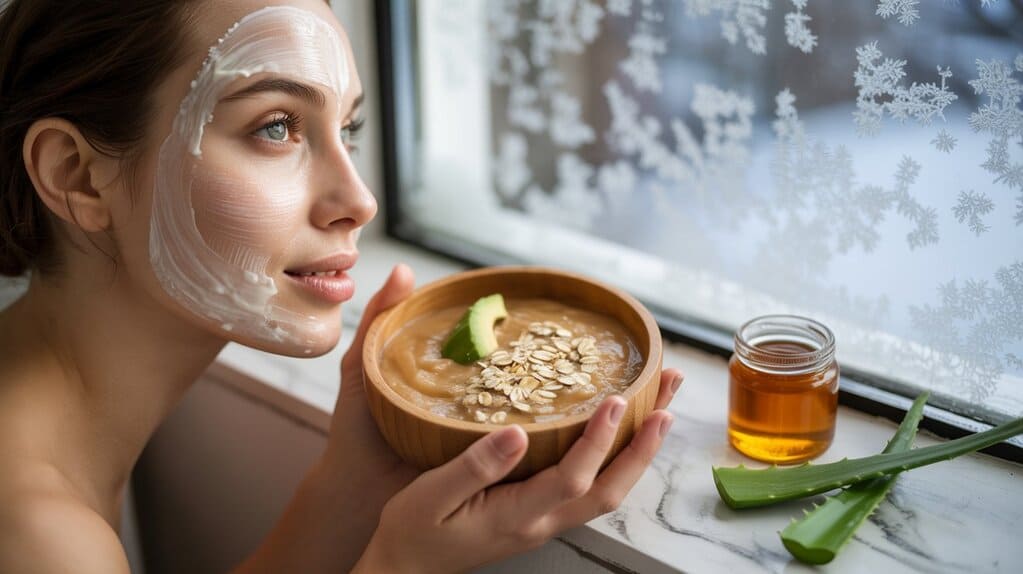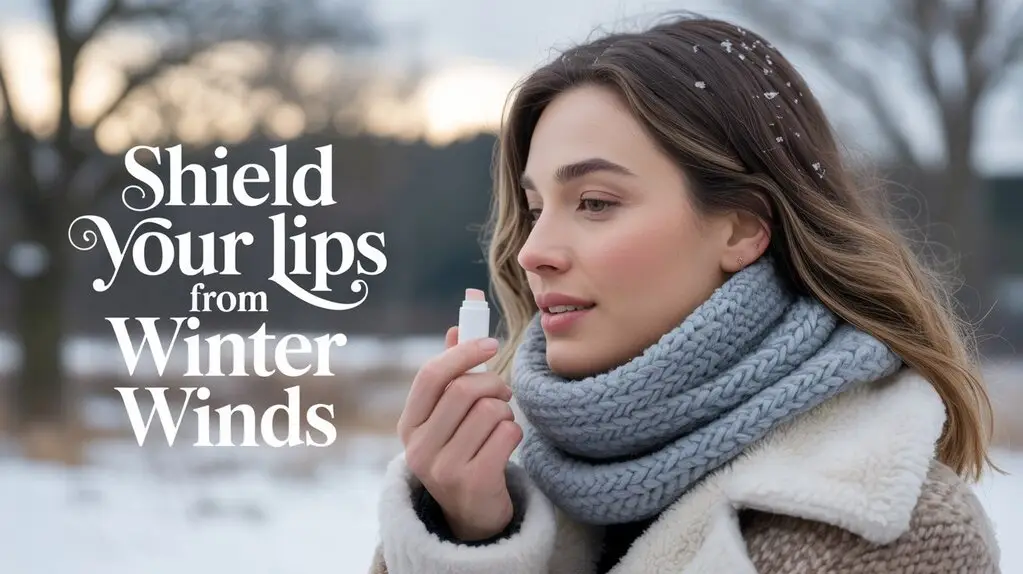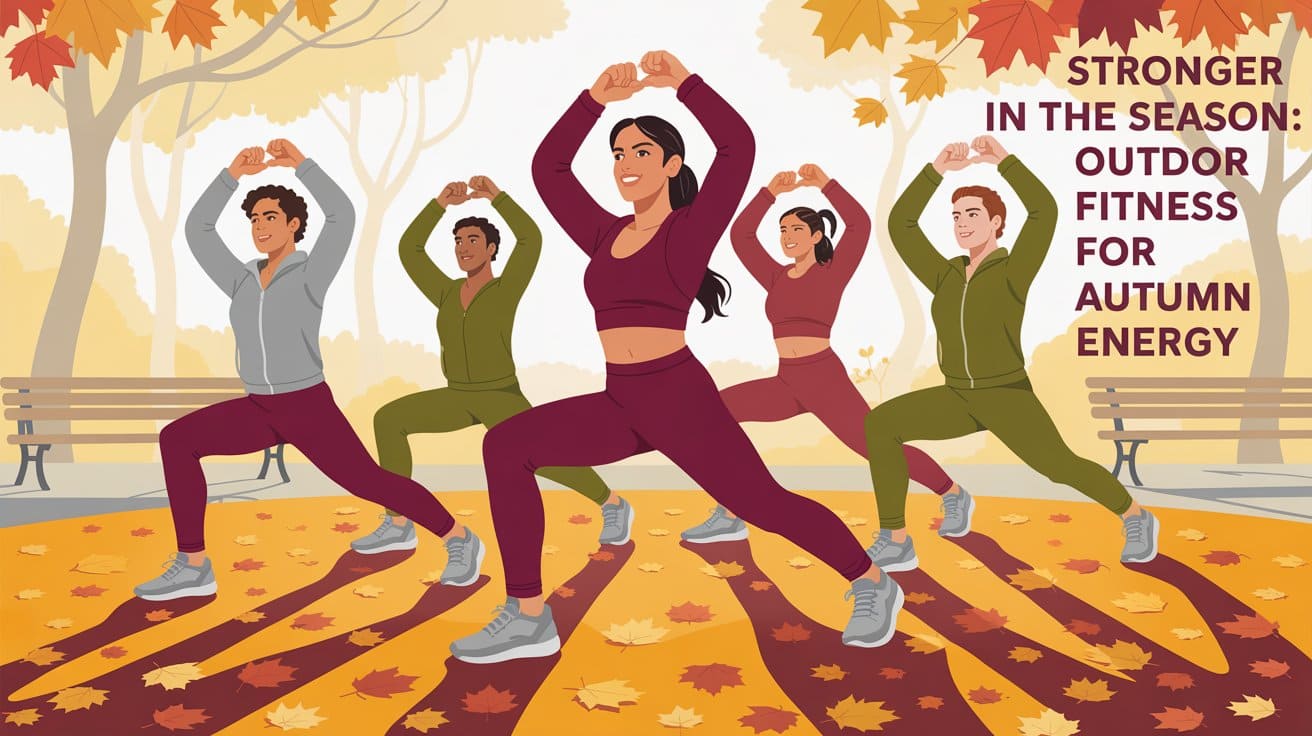
Keywords (SEO): heat acclimation, summer exercise, cooling strategies, hydration for exercise, autumn workouts, seasonal training, exertional heat illness, pre-cooling, moderate exercise immunity, outdoor training safety
Introduction
Adapting your fitness routine to the shifting climate — high summer heat and the cooler, windier autumn breezes — keeps performance high, injury risk low, and immunity strong. Seasonal changes affect thermoregulation, hydration needs, sleep, recovery, and even immune function. Smart programming combines heat-acclimation, sensible timing of workouts, pre-/per-/post-cooling methods in summer, and progressive re-introduction to cooler, windier conditions in autumn. Below you’ll find evidence-based recommendations, practical workout templates, a quick reference table, and citations to recent scientific and professional guidance from researchers and organizations across Asia, America, and Europe.
Key points (at-a-glance)
- Start heat-acclimation early: gradual exposure over 7–14 days improves safety and performance. PubMedPMC
- Train at the coolest times (early morning or evening) during extreme heat and shift to daylight hours as temperatures drop.
- Hydrate proactively and include electrolytes when sessions exceed 60–90 minutes or when sweating heavily. American College of Sports Medicine
- Use pre-cooling and per-cooling (ice slurry, cold fluids, cooling garments) to blunt heat strain for long or intense sessions. FrontiersPMC
- Progress intensity as the season changes; reduce high-intensity volume during heat waves to avoid transient immune suppression. PubMed
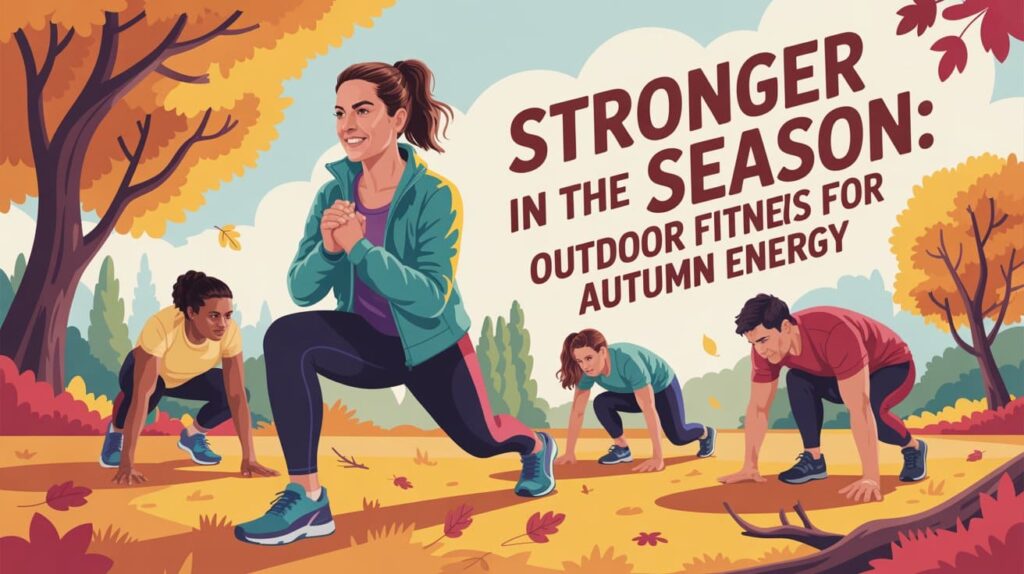
Evidence summary : what recent studies and organizations say
- Heat-acclimation improves tolerance and reduces heat illness risk. Systematic reviews and controlled studies show measurable physiological adaptations (lower resting and exercising heart rate, increased sweat rate, reduced core temperature during exercise) following structured heat exposures lasting about 7–14 days. These findings apply to athletes and occupational groups alike. PubMedPMC
- Professional guidance on exertional heat illness. The American College of Sports Medicine (ACSM) and allied bodies emphasize recognition, immediate treatment (ice-water immersion for exertional heat stroke), and staged return-to-activity policies — critical reading for coaches and fitness pros. PubMedAmerican College of Sports Medicine
- Cooling strategies are effective performance aids. Reviews indicate both external cooling (cold-water immersion, cooling vests) and internal cooling (ice slurry, cold drinks) can enhance endurance or delay fatigue in hot conditions; benefit size depends on sport, intensity, and duration. Recent studies from Europe and North America quantify practical gains. FrontiersSpringerLink
- Exercise intensity and immune function are linked. Regular moderate exercise generally supports immune health, while very prolonged or extremely intense sessions can transiently suppress some immune functions — a consideration in late summer when heat stress and training load combine. PubMedJournals of Physiology
- Occupational and emergency worker research corroborates cooling and scheduling benefits. Newer analyses examine cooling vests and environmental strategies (fans, shaded rest) that are translatable to recreational training. Nature
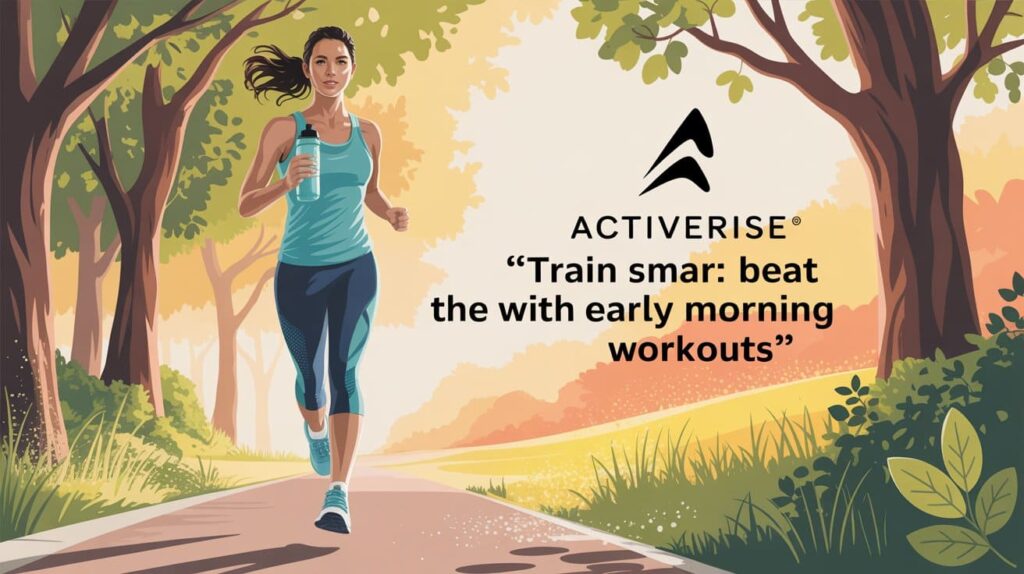
Practical seasonal programming — routines and examples
Below are three adaptable weekly templates that balance safety, performance, and enjoyment. For all templates: warm up gradually (10–15 min), include mobility work, and cool down.
Template A — Hot Summer (daytime high > 30°C / 86°F)
- Monday — Early-morning moderate run (30–45 min, RPE 5–6). Pre-hydrate; bring cold fluid.
- Tuesday — Strength (circuit, gym or shaded outdoor): 40 min, moderate loads, focus on compound lifts. Finish with active stretching.
- Wednesday — Recovery + heat-acclimation: 20–30 min light cycling or brisk walk in the heat (gradual exposure). Use 10–15 min cold shower after session.
- Thursday — Interval session in early morning: 6 × 2 min hard / 2 min easy (total 30 min). Avoid midday.
- Friday — Active recovery or mobility: yoga or swim (if available) ~30 min.
- Saturday — Long aerobic session (coolest part of day): 60–90 min low-to-moderate pace with frequent fluid breaks + electrolyte mix. Consider pre-cooling (cold beverage or ice slurry) if >75 min. FrontiersPMC
- Sunday — Rest
Template B — Late Summer / Transition
- Emphasize similar structure but shift sessions slightly later in the morning and increase training load gradually; monitor sleep and illness symptoms.
Template C — Autumn Breezes (daytime 10–20°C / 50–68°F)
- Begin to increase intensity and mix: interval sessions, hill repeats, strength hypertrophy blocks. Daylight workouts are fine. Take advantage of cooler recovery to include outdoor high-intensity sessions while maintaining hydration.
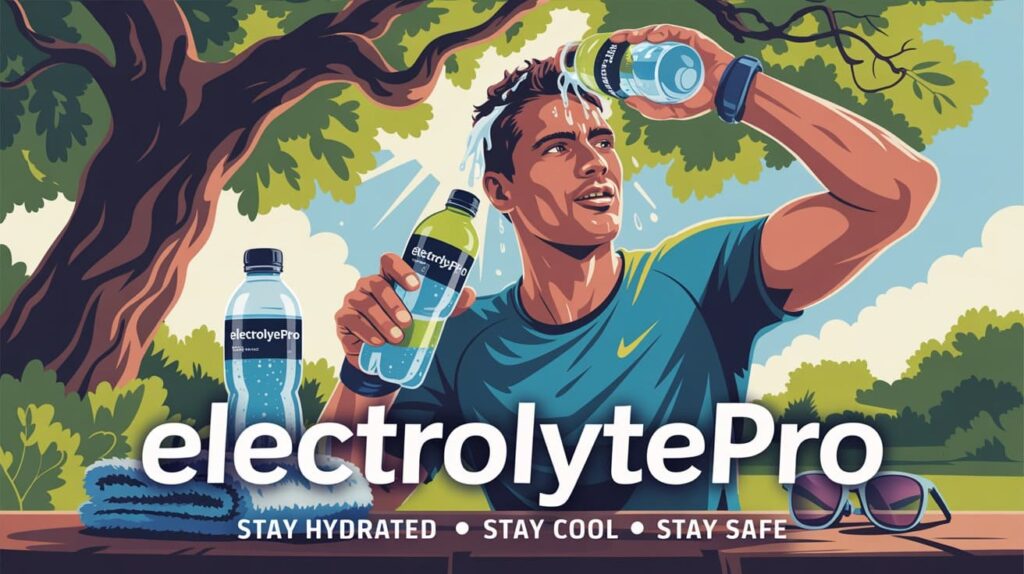
Table: Quick decision guide by temperature and humidity
| Ambient conditions | When to train | Intensity recommendation | Cooling/hydration tactics |
|---|---|---|---|
| > 33°C / >91°F or high humidity | Early morning / late evening | Low–moderate; avoid long high-intensity | Pre-cool (cold drink), wear light clothing, shorter intervals, electrolytes |
| 28–33°C / 82–91°F moderate humidity | Morning/late afternoon | Moderate with caution | Ice slurry for long sessions, frequent breaks, shaded routes |
| 20–27°C / 68–81°F | Any reasonable daylight | Moderate–high (safe window) | Standard hydration; monitor perceived exertion |
| 10–19°C / 50–66°F autumn cool | Daytime | Moderate–high; good for intensity | Layer clothing; dynamic warm-up; wind protection if needed |
(Table adapted from evidence in ACSM, Frontiers, and systematic reviews.) American College of Sports MedicineFrontiers
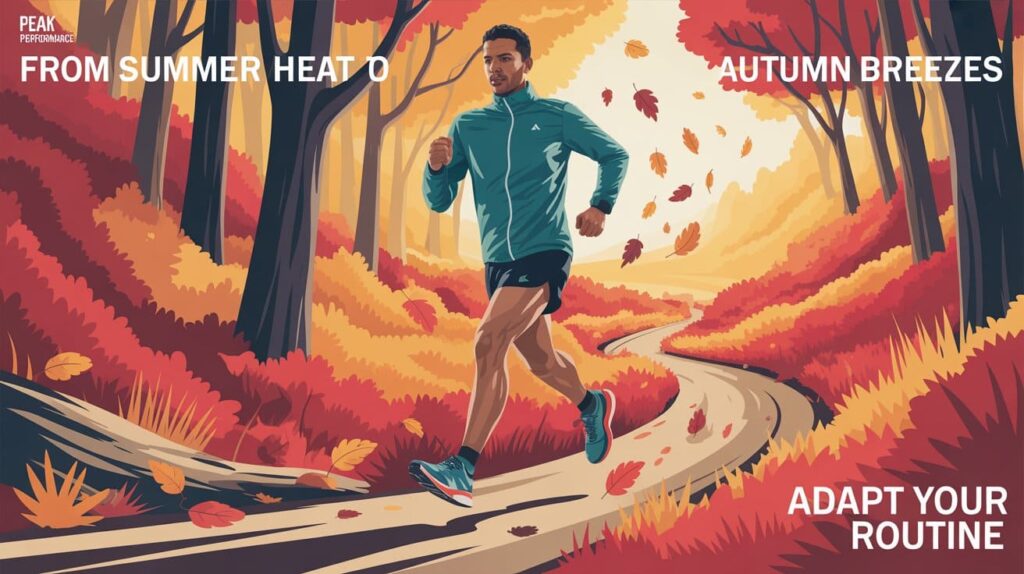
Specific tactics (evidence-based)
Heat-acclimation protocol (practical)
- 7–14 days of daily, progressive exposure: 60–90 min of exercise at moderate intensity in the heat (or the usual training load) increases sweat rate and lowers core temp and heart rate over time. Monitor RPE and signs of heat illness. PubMedPMC
Hydration & electrolytes
- Drink pre-session (250–500 mL ~2 hours before), sip during exercise (150–250 mL every 15–20 min depending on sweat losses), and replace with 1.0–1.5 L fluid per kg body mass lost after long sessions. Add electrolytes when sessions exceed 60–90 min or when salt loss is high. Professional position statements from sports medicine bodies support these practical ranges. American College of Sports Medicine
Pre-cooling and per-cooling
- Cold beverages, ice slurries, and cooling garments can attenuate heat strain and improve endurance in hot environments. Consider gastrointestinal tolerance for ice slurries; test in training. Recent reviews show consistent but variable benefits. FrontiersSpringerLink
Monitoring and red flags
- Watch for dizziness, confusion, severe headache, collapse, nausea, and cessation of sweating — seek emergency care for suspected exertional heat stroke and use immediate cold-water immersion while awaiting EMS. ACSM guidance outlines a chain of survival and return-to-activity steps after exertional heat illness. PubMed
Immune considerations
- Maintain moderate training loads, prioritize sleep and nutrition, and reduce long, high-intensity volumes during extreme heat waves to avoid transient immune suppression reported in exercise immunology literature. Regular moderate training is overall immune-supportive. PubMedJournals of Physiology
Figure idea (conceptual — include in blog or social assets)
- Infographic: “When to Train by Temperature” — a vertical timeline showing ideal exercise times (coolest to warmest), hydration checkpoints, and simple pre-cooling icons.
- Mini-flowchart: “If you feel dizzy after training in heat → Check: hydration, rest, shade → If symptoms persist or confusion → 911 and cold immersion”.
(These visual cues increase user safety and shareability — good for SEO and engagement.)
Sample 8-week microcycle (summer → autumn transition)
Week 1–2 (heat-acclimation): Light–moderate daily exposure, reduced high-intensity intervals to one per week.
Week 3–5 (build): Two interval sessions/week, one long aerobic, two strength days, active recovery. Use pre-cooling for long sessions.
Week 6–8 (autumn shift): Introduce higher-intensity intervals and heavier strength loads; shift sessions to daylight; reduce reliance on pre-cooling as temperatures drop.
Conclusion
Smart seasonal programming protects health and enhances performance. In high summer heat, emphasize heat-acclimation, schedule workouts at cooler times, prioritize pre-/per-cooling and electrolyte replacement, and reduce extreme high-intensity volume during heat waves. As autumn breezes arrive, reintroduce higher intensity and strength work, take advantage of cooler recovery conditions, and continue sensible hydration, sleep, and recovery practices. The recommendations above are grounded in consensus guidelines from sports medicine organizations and recent reviews from researchers across continents; they are practical, scalable, and designed to reduce risk of exertional heat illness while preserving training gains. American College of Sports MedicinePubMed+1FrontiersSpringerLink
Selected references and further reading (representative, recent)
- Brown HA, et al. Quantifying Exercise Heat Acclimatisation in Athletes and Military Personnel. Systematic review (2024). PubMed. PubMed
- ACSM Expert Consensus Statement on Exertional Heat Illness: Recognition, Management, and Return to Activity. (ACSM, 2023). American College of Sports MedicinePubMed
- Roriz M, et al. Performance effects of internal pre- and per-cooling across competitive sports. Frontiers in Nutrition (2022). Frontiers
- Jiang D, et al. Effects of different external cooling placements prior to and during exercise. Frontiers in Physiology (2023). Frontiers
- Yu L, et al. Effects of Precooling on Endurance Exercise Performance. PMC article (2024). PMC
- Du F, et al. Review on the Effect of Exercise Training on Immune Function. (2022). PubMed/Review. PubMed
- Nature Scientific Reports — Effectiveness of cooling strategies for emergency personnel (2025). Nature
- National Athletic Trainers’ Association — Position statement: Exertional Heat Illnesses. (2023–2025 editions). nata.org
- For general context on exercise and immunity: M. Gleeson, Immune function in sport and exercise (Journal of Applied Physiology, classic review). Journals of Physiology
